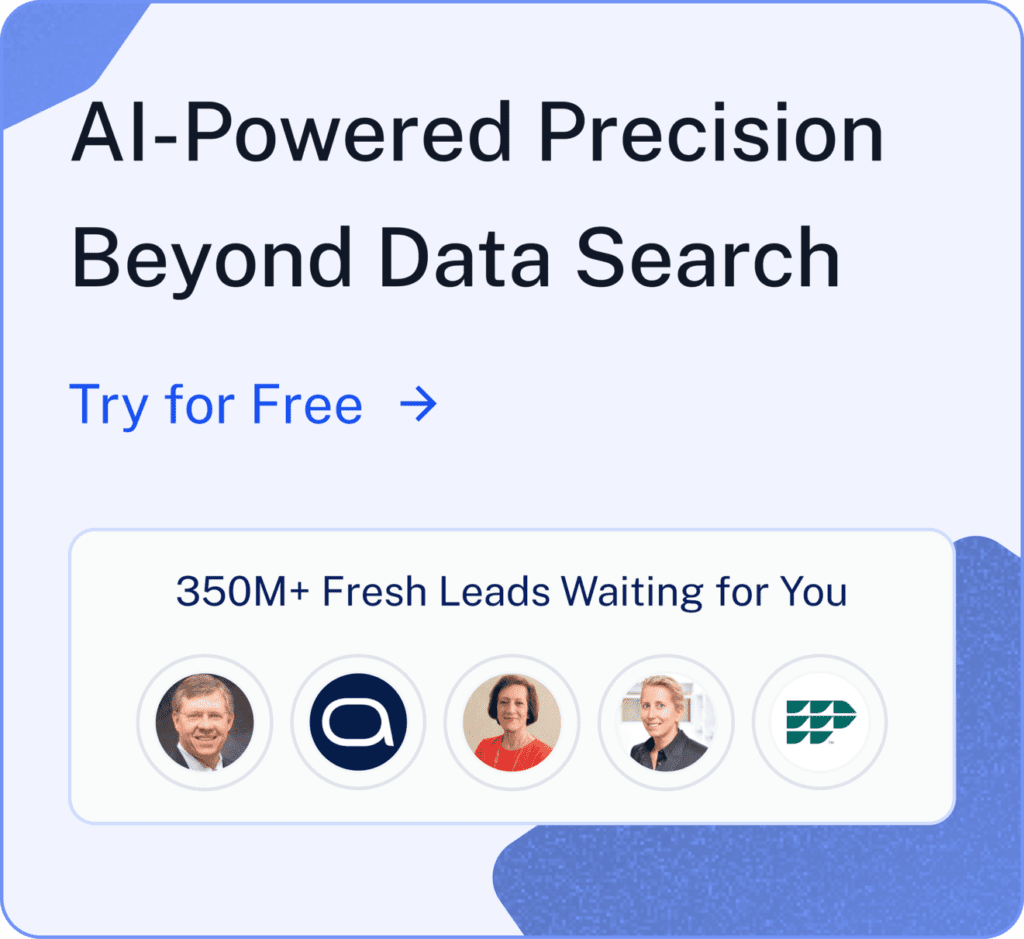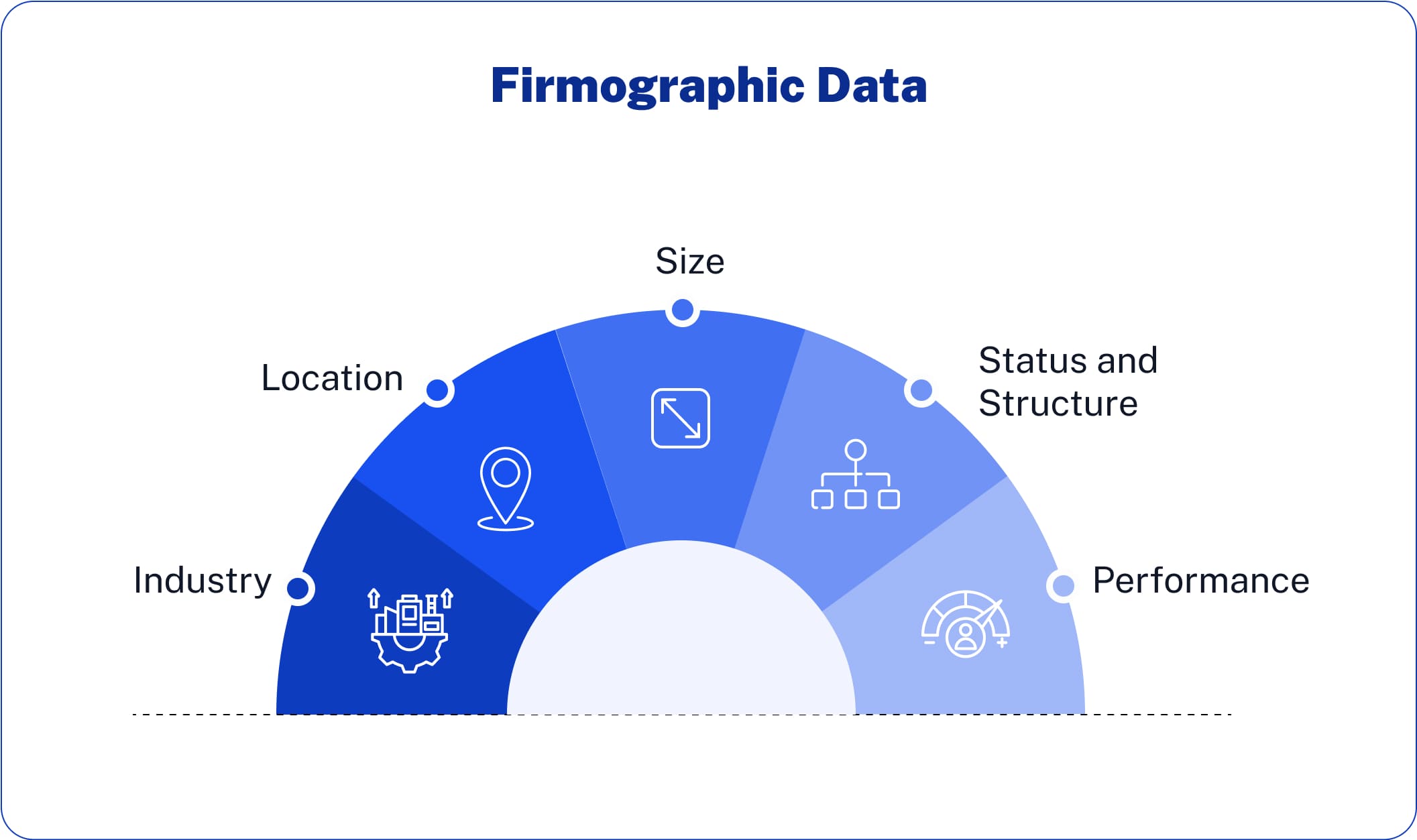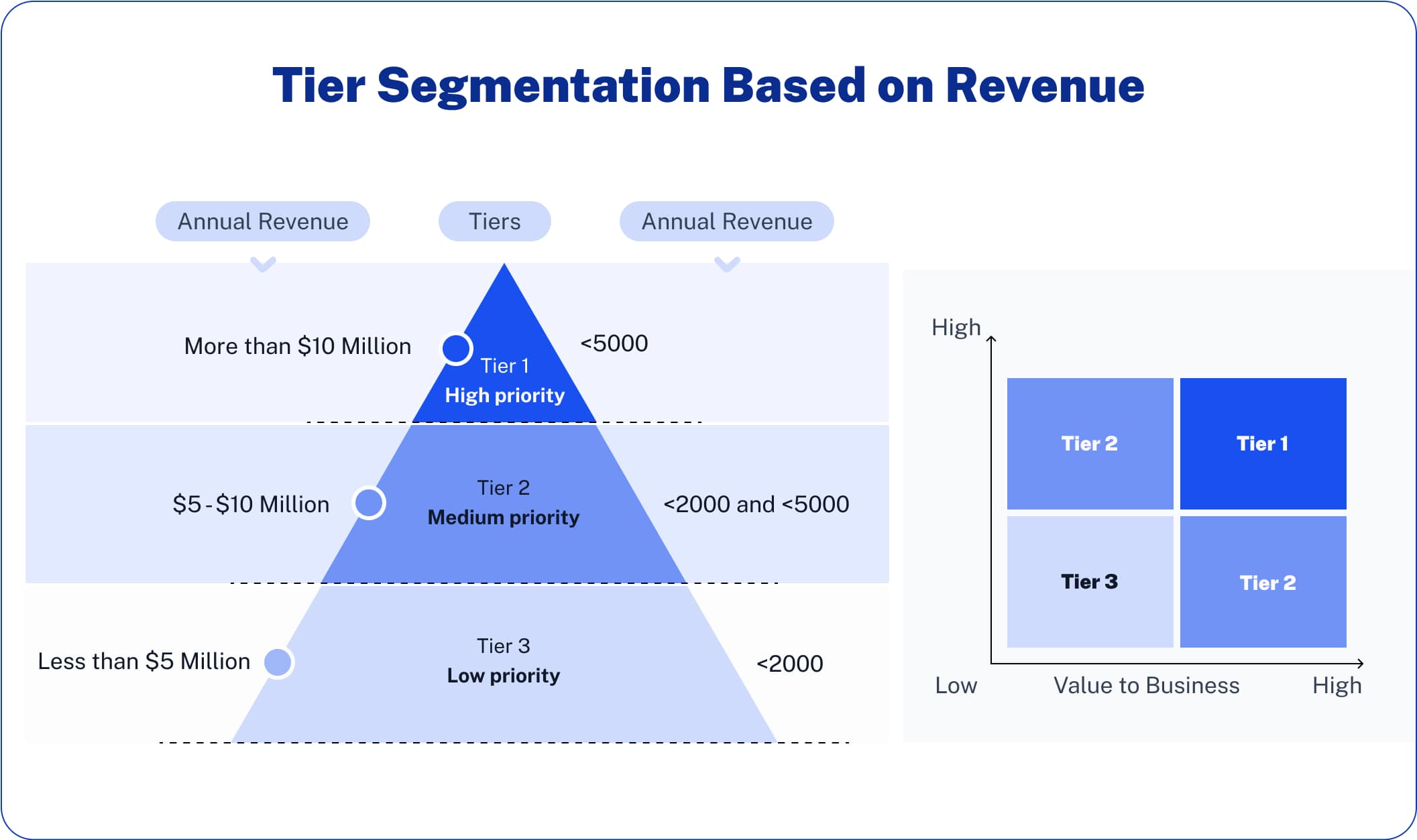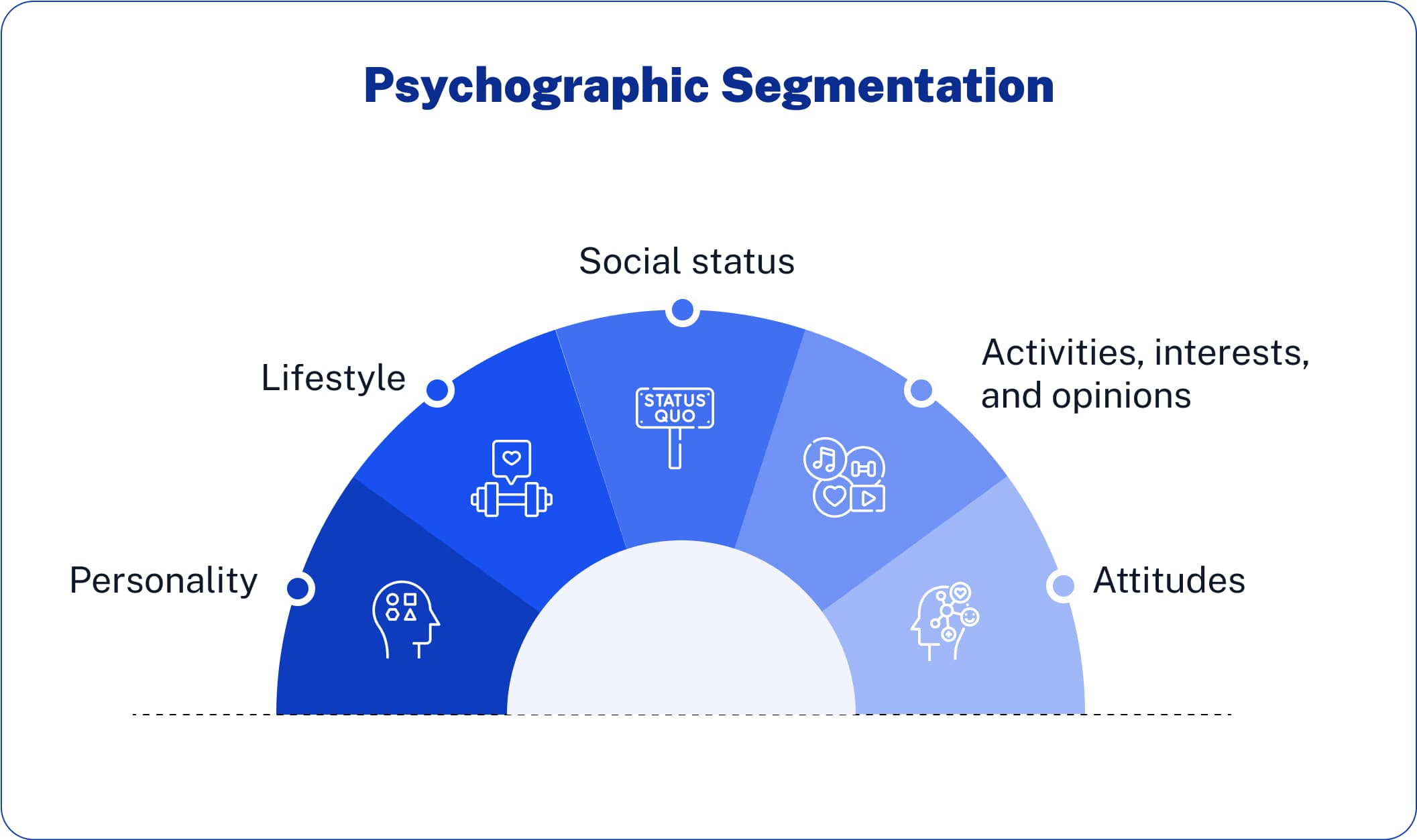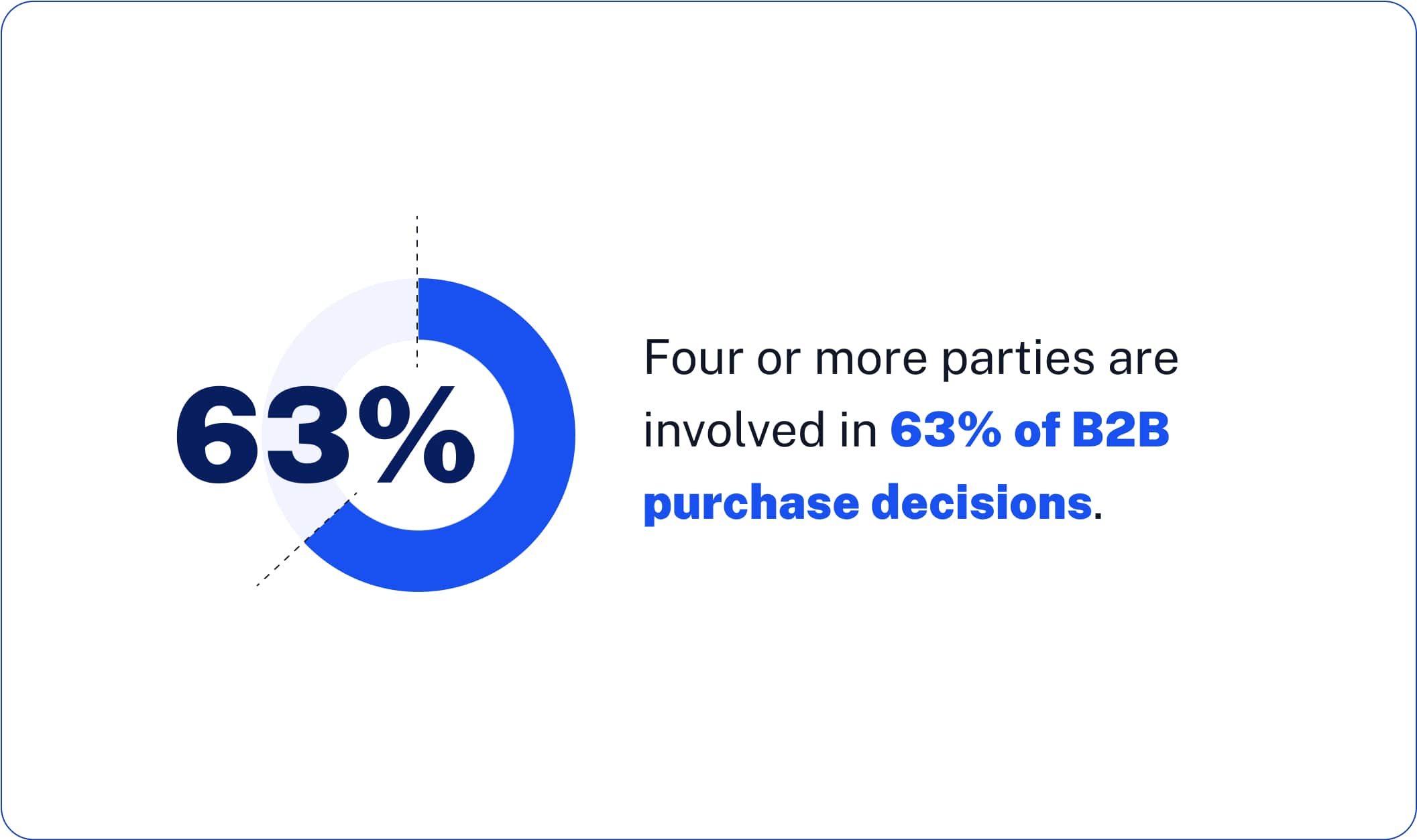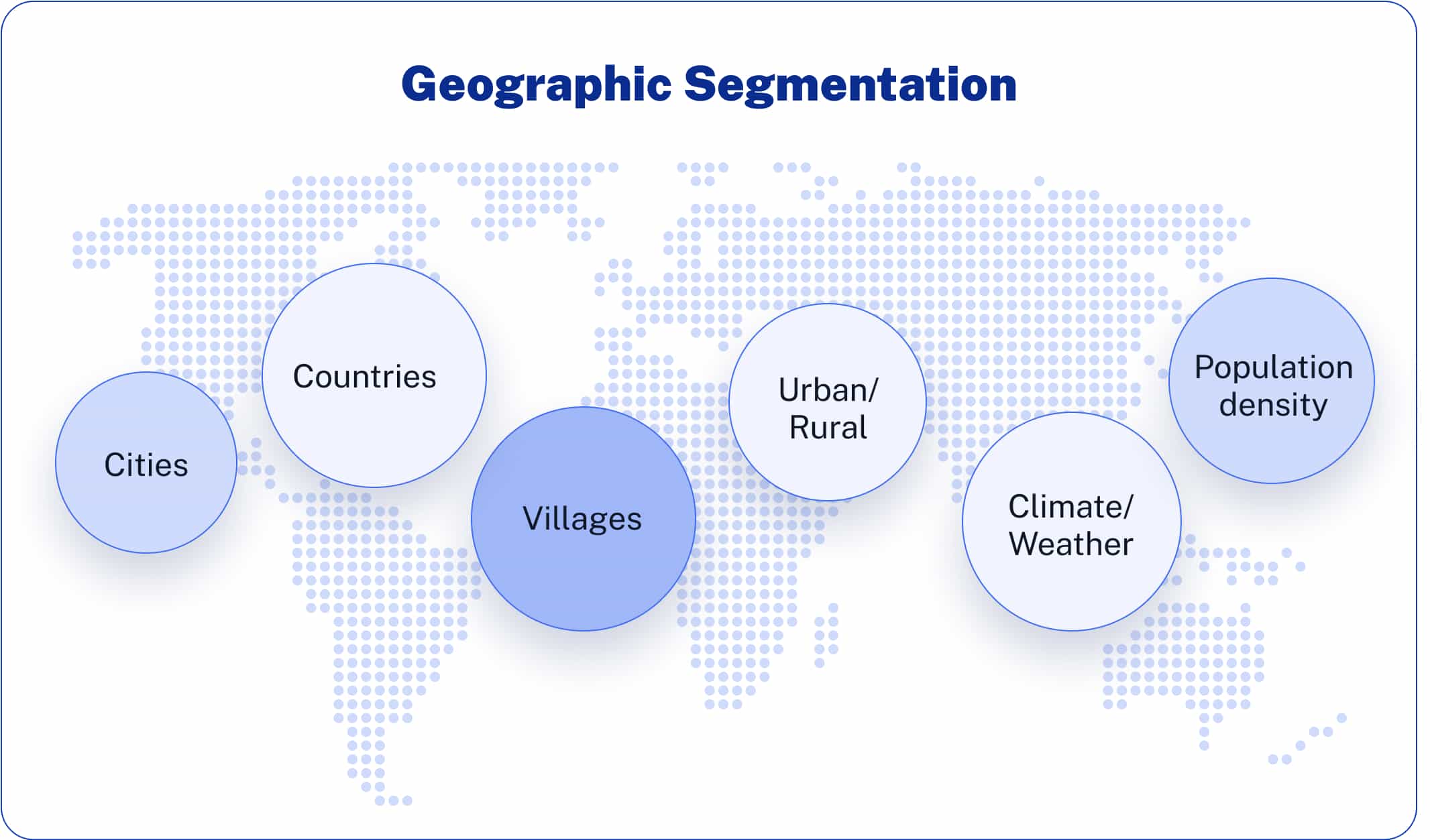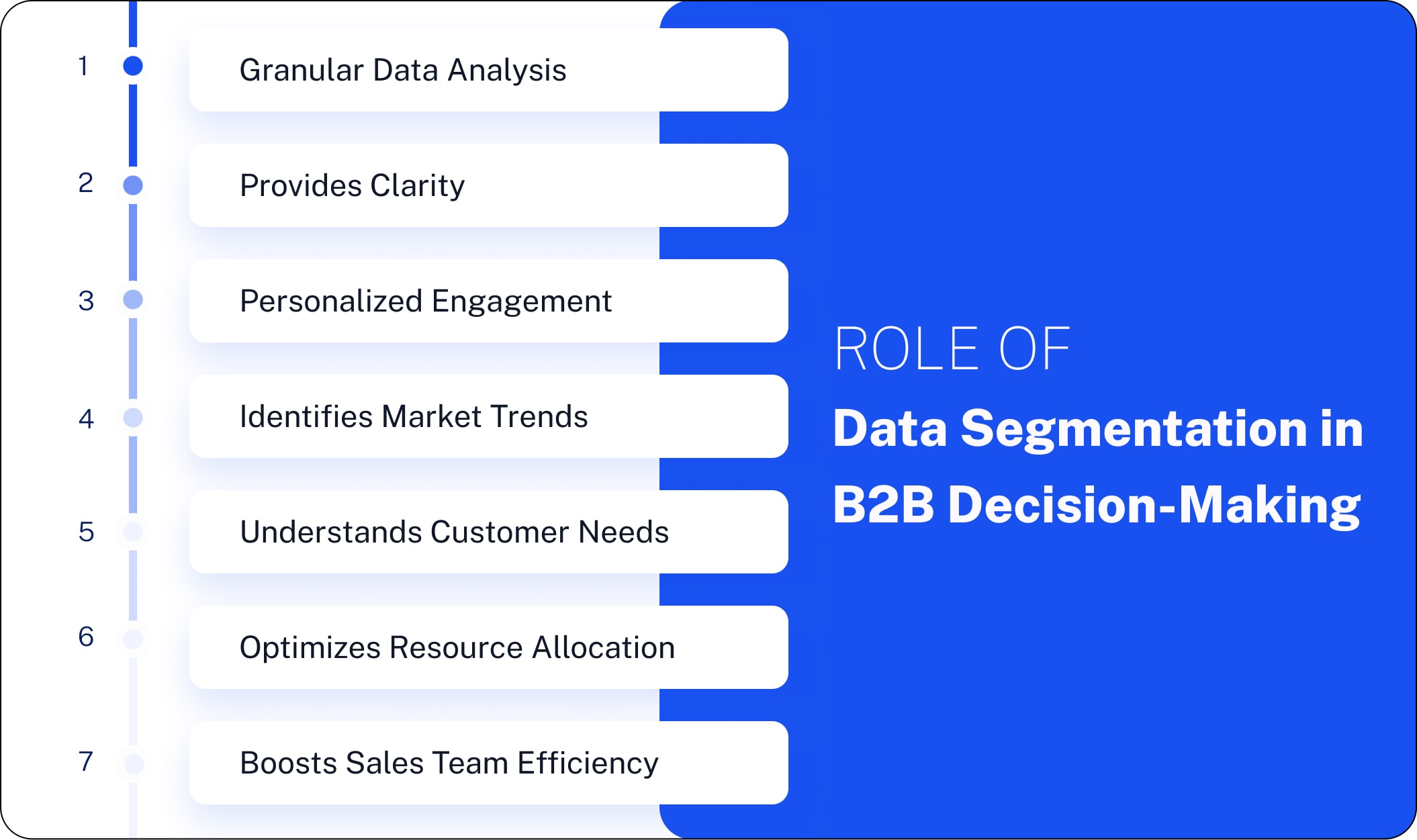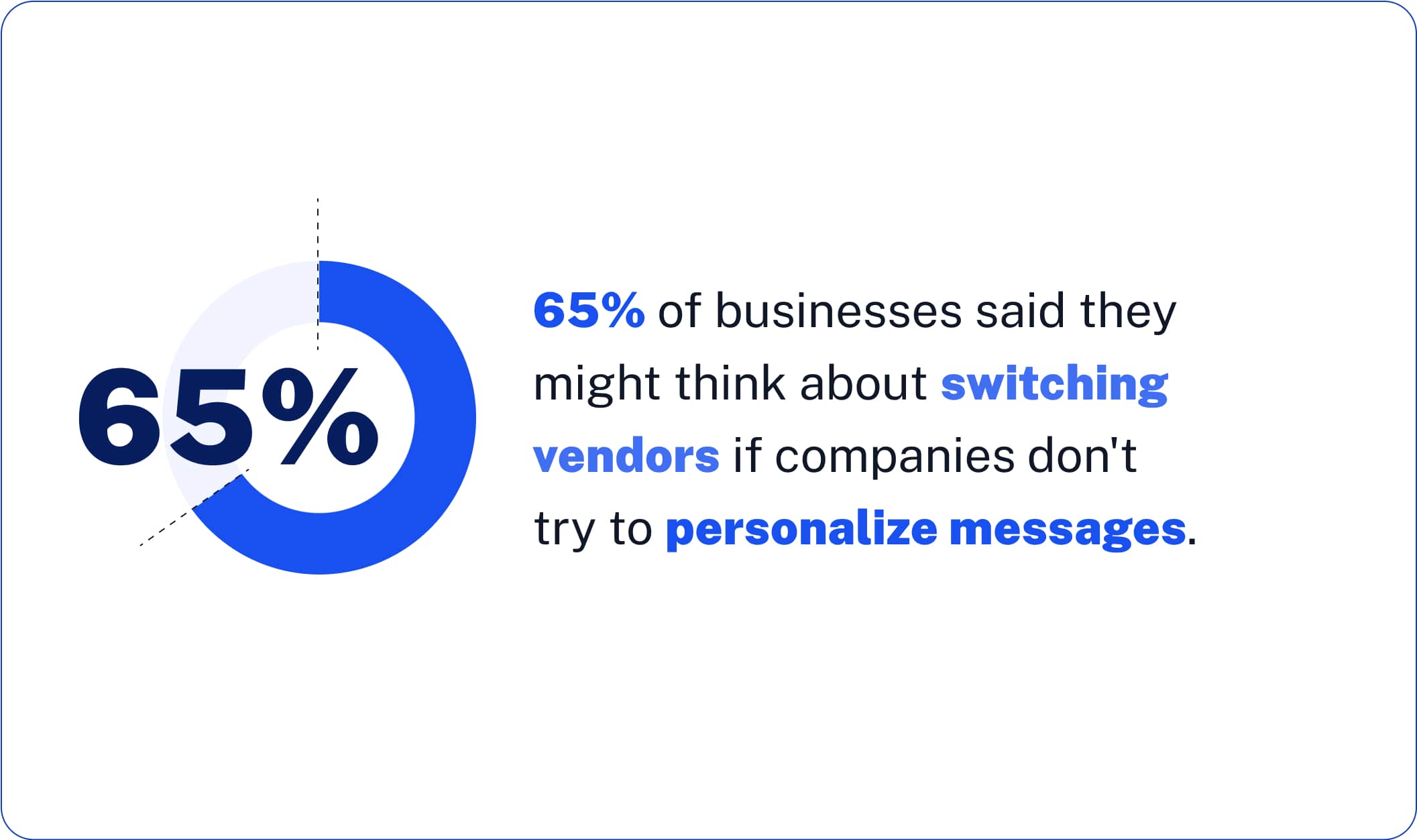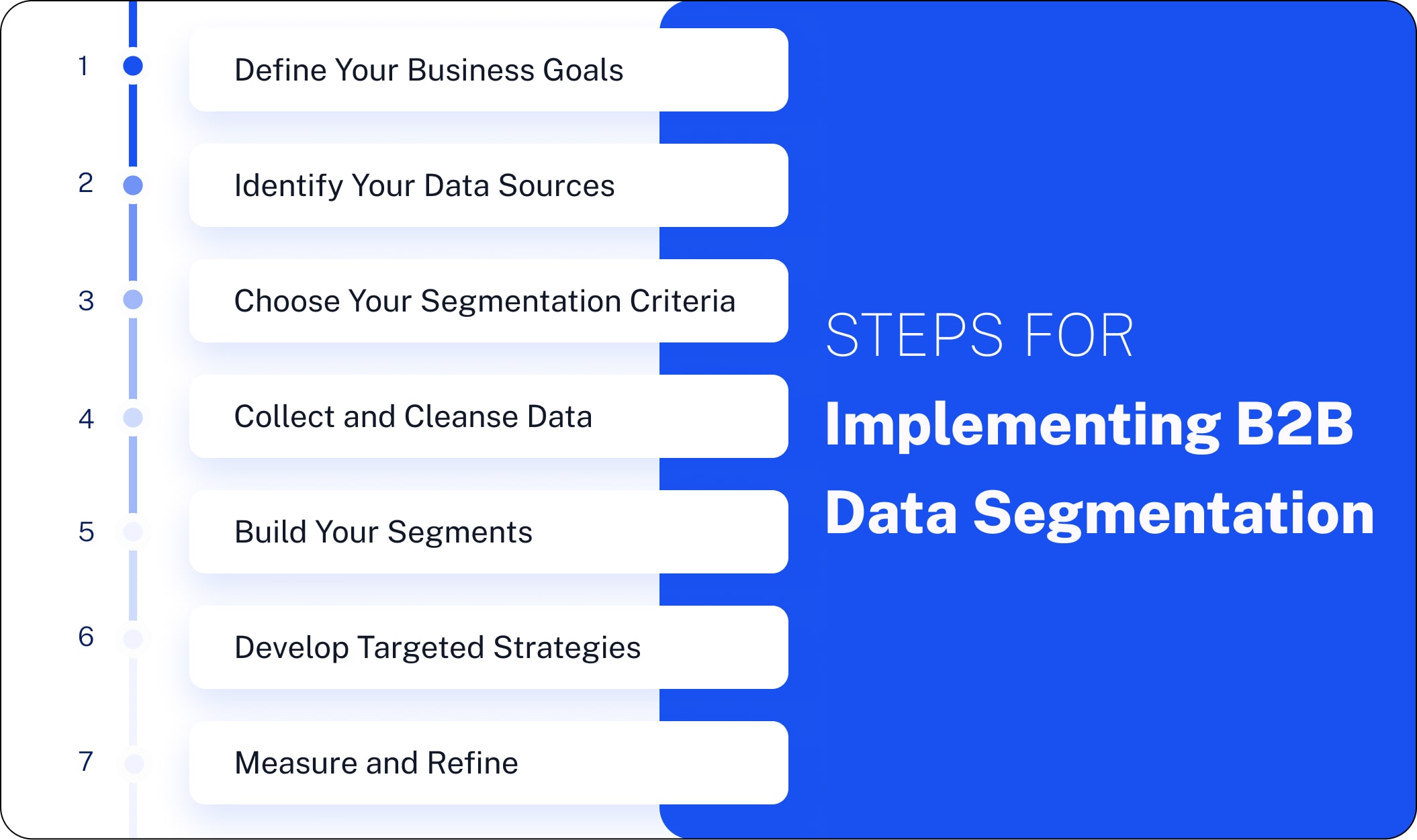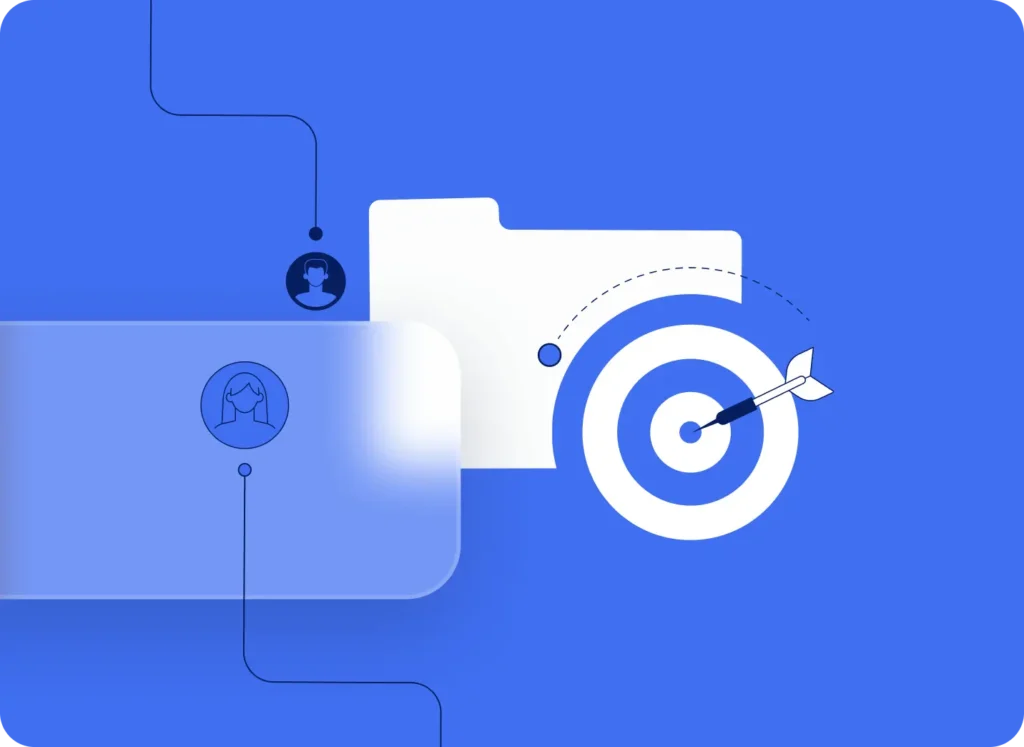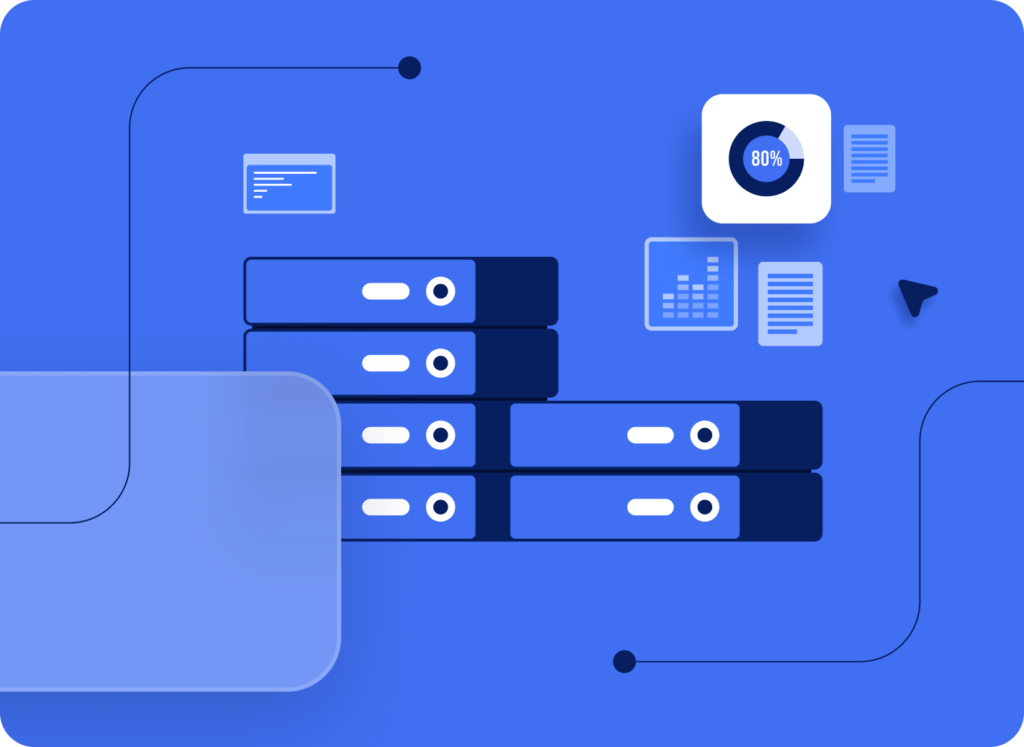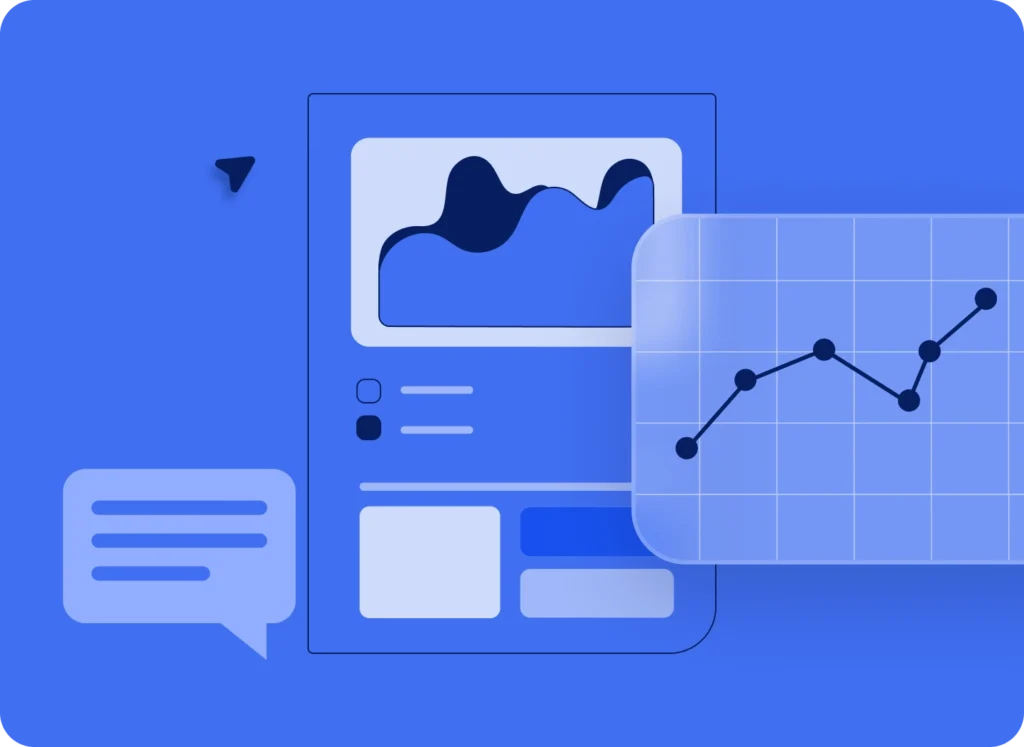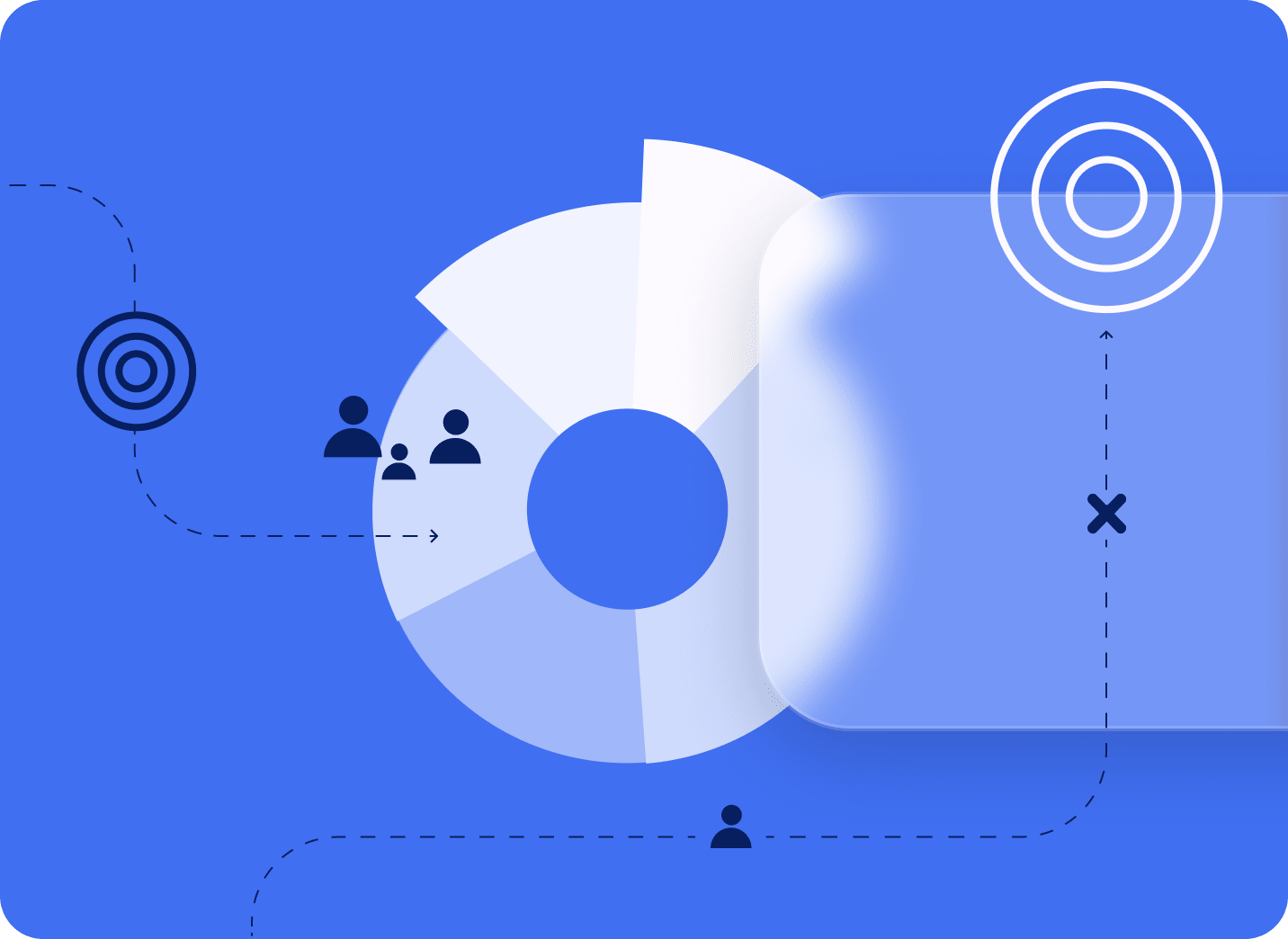Targeting those interested or have expressed interest in your services is more effective than targeting a broad audience of all ages.
So, how can you achieve this?
This is when data segmentation comes in.
Dividing your audience based on key traits allows you to personalize your marketing efforts to each segment’s unique needs. This personalized strategy links organizations with potential customers on a deeper level, improving the possibility of conversion.
Now, the question is whether you want your sales and marketing teams to spend less time guessing and more time closing agreements.
Data segmentation is crucial for firms wanting to increase sales and marketing productivity. It will also help you boost your lead-generation efforts.
In this guide, you’ll learn the different types of data segmentation, use cases, and the best practices to implement data segmentation.
Let’s get started!
What is B2B Data Segmentation?
Data segmentation is the process of splitting and grouping similar data depending on specific parameters so that it can be used more efficiently in marketing and operations.
Examples of data segmentation could include:
- Industry
- Geography
- Demographics etc.
You must have the right processes and technology in place to adopt the correct type of data segmentation and communicate more successfully with your target audience.
This allows you to analyze and profile your existing information while also guaranteeing that any new data is properly separated. Data segmentation requires high-quality data that is both accurate and does not lack basic information.
B2B Data Segmentation Examples
By looking at real-world examples of B2B data segmentation, you can discover how businesses use segmented data to create focused marketing campaigns, improve customer experiences, and guide strategic decision-making.
Here are a few noteworthy cases of real-world applications for B2B data segmentation:
Firmographic Segmentation
A business consultant categorizes its B2B clientele using firmographics, such as company size, industry, revenue, and geography. Because of this segmentation, the consultancy can provide customized advisory services and solutions that meet the unique requirements of various business types.
Tier Segmentation
Technology providers classify their B2B clientele according to factors like spending, loyalty, or involvement. By classifying them into several tiers, the provider can nurture relationships with prospects and lower-tier clients while prioritizing resources, providing special advantages, and offering individualized care to high-value customers.
Need Segmentation
A B2B software-as-a-service (SaaS) provider divides its clientele into groups according to their unique requirements and problem areas.
For instance, it might target companies searching for marketing automation systems, customer relationship management (CRM) tools, or project management solutions. Because of this segmentation, the organization can customize its messaging and product offers to meet the specific needs of each category.
Customer Segmentation
A financial institution divides each B2B client into groups based on their degree of financial sophistication or skill. This division may involve beginner, intermediate, and expert divisions.
The institution can satisfy its clients’ needs and support their financial goals by offering tailored financial products, services, and educational resources based on an assessment of their knowledge and experience level.
Demographic Segmentation
A marketing firm divides its B2B clientele according to job title, age, gender, and educational attainment. This segmentation allows the firm to develop content and marketing campaigns that speak to distinct demographic segments within its target market, increasing engagement and conversion.
Psychographic Segmentation
A B2B software company divides its clientele according to psychographic characteristics, including personality traits, attitudes, values, and lifestyles. Thanks to this segmentation, the organization can increase relevance and resonance by customizing its messaging and product positioning to appeal to various client categories’ distinct motivations and preferences.
Key Accounts Segmentation
A manufacturing business divides its B2B clientele into key accounts according to their long-term worth, revenue potential, and strategic significance. Key accounts receive individualized attention, committed account managers, and tailored solutions to guarantee their happiness and loyalty.
Thanks to this segmentation strategy, the organization may better allocate resources and concentrate on building relationships with its most valued clients.
Organization Segmentation
A marketing agency divides its B2B clientele based on departmental divisions, functional roles, or hierarchical levels. Through this segmentation, the agency may customize its solutions to meet the specific goals of various company departments, including marketing, sales, human resources, and operations.
Decision-Makers Segmentation
A software company divides its B2B clientele according to the positions and duties of decision-makers in potential customers’ organizations. Categories like managers, technical specialists, and executives may be included in this segmentation.
Four or more parties are involved in 63% of B2B purchase decisions.
Therefore, by focusing on decision-makers and providing them with pertinent messaging and value offerings, the business can improve its chances of gaining support and promoting conversion.
Profitability Segmentation
Telecom providers divide their B2B clientele based on revenue contribution and profitability.
This segmentation allows the supplier to identify high-value clients who demand extra care and funds for upselling, customer retention, and customer service. Concentrating on profitable segments allows the provider to maximize profitability and optimize revenue streams.
Industry-Specific Segmentation
Software companies can divide their B2B audience according to industry verticals, such as manufacturing, healthcare, or finance.
The business can more effectively connect with its target audience and increase conversion rates by customizing its marketing messaging and product offers to each industry’s particular requirements and pain areas.
Geographic Segmentation
Based on geographic location, an e-commerce platform divides its B2B clientele and targets various areas or nations with tailored advertising campaigns and promos. The platform can enhance its relevance and appeal to its many target segments by catering to market realities, cultural subtleties, and regional preferences.
Based on geographic location, an e-commerce platform divides its B2B clientele and targets various areas or nations with tailored advertising campaigns and promos. The platform can enhance its relevance and appeal to its many target segments by catering to market realities, cultural subtleties, and regional preferences.
Company Size Segmentation
A business services provider divides its clientele into small, mid-sized, and large organizations according to the size of their own companies. This allows the provider to better serve and retain customers by providing specialized service packages and support solutions matched to each segment’s unique needs.
Behavioral Segmentation
Marketing agencies use behavioral data, such as website interactions, email engagement, and content consumption trends, to segment their B2B audience. This segmentation allows the agency to target leads and prospects at various points in the buyer’s journey with tailored messaging and content recommendations, which boosts nurturing and conversion rates.
Persona-Based Segmentation
A technology business divides its B2B audience into discrete buyer personas based on job duties, responsibilities, and pain points. By knowing each persona’s particular requirements and difficulties, the business may create focused marketing campaigns and product features that target certain pain spots and provide the most value to its customers.
With 60% of B2B marketers focusing on enhancing audience segmentation and personalities, data segmentation will be essential.
Use Cases of B2B Data Segmentation
Let’s take a look at some of the data segmentation use cases.
Tailoring Marketing Messages
Imagine contacting a small business owner with a generic email about corporate software solutions.
It’s unlikely that they will get engaged, right?
Using B2B data segmentation, you can create tailored marketing messages that effectively connect with each audience category.
Here’s how:
- Understanding Needs and Challenges: By segmenting your data, you may assess each segment’s specific demands and issues. For instance, whereas a subset of tiny software firms may prioritize usability and affordability, a subset of large healthcare institutions may prioritize data security and compliance features.
- Personalization: You can use this information to tailor your marketing messaging to address each category’s priorities directly. You may customize emails, landing sites, and social media content to address their problems and demonstrate how your product or service meets their needs.
- Boosting Engagement and Conversions: Personalized communications strike a deeper chord with the audience, resulting in elevated click-through rates, heightened interaction with your material, and, eventually, more qualified leads and conversions. Consider the distinction between a sincere chat with a reliable friend and a generic radio ad.
Remember, personalization fosters confidence and motivates action.
Enhancing Customer Experience
80% of B2B clients are willing to spend extra for better customer service.
This is why customer experience is the key to creating meaningful B2B partnerships.
B2B data segmentation promotes advocacy and loyalty by enabling you to design a customized experience for every consumer group.
See below how B2B data segmentation boosts customer experience:
- Support Segmentation: Consider dividing your clientele based on subscription level or product usage. This enables you to provide customized support choices, such as self-service knowledge bases for users utilizing simple features or devoted account managers for high-value clients.
- Proactive Communication: Using segmentation, you may foresee your customers’ demands based on past purchases and behavior. Consider distributing customized emails with pertinent product updates, learning materials, or subscription expiration reminders. This proactive contact builds trust by showing them that you appreciate their business.
- Nurturing Loyalty: Segmentation allows you to offer incentives and loyalty programs specifically tailored to each section. Consider giving high-volume commercial clients early access to new products or special pricing to small businesses. These focused incentives encourage ongoing participation and foster enduring client loyalty.
By providing a customized customer experience adapted to each market segment, you can develop brand supporters who will stick with you and speak out in support of your company.
Product Development and Innovation
B2B data segmentation offers insights into client demands, preferences, and market trends, making it a useful tool for guiding product development and innovation. Firms can find common themes, patterns, and chances for innovation or product enhancement through audience segmentation based on job position or pain areas.
Below are the roles that B2B data segmentation plays in product development and innovation:
- Identifying Feature Gaps: Segmentation highlights potential areas where your present product offering may not meet the needs of a particular clientele. Imagine examining data from a subset of e-commerce companies to identify a common inventory management pain issue. A new feature that specifically meets this demand can be created using this knowledge.
- Prioritizing Development Efforts: Segmentation aids in prioritizing development efforts by identifying the features your high-value or high-growth customer segments most demand. This ensures that the features you invest in will affect your organization the most.
- Understanding Usage Patterns: By examining user data within segments, you can determine how various clients engage with your product. This may point up opportunities for additional features, functionality, or even the development of completely new product lines catered to particular market niches.
Utilizing B2B data segmentation in product creation helps ensure that your offers are current and always evolving to satisfy the market’s diverse customer base demands.
Role of Data Segmentation in B2B Decision-Making
As firms adopt data-driven decision-making processes, data segmentation is crucial in providing actionable insights, steering strategic efforts, and enhancing their competitive advantage.
B2B data segmentation facilitates data-driven decision-making in the following ways:
Granular Data Analysis
Businesses can divide large, complicated datasets into smaller, easier-to-manage data through segmentation based on shared traits, habits, and preferences. By segmenting their data, B2B companies can make more educated decisions based on factual evidence rather than guesswork and better understand their audience and market dynamics.
Provides Clarity
Bringing focus and clarity to B2B decision-making is one of the main ways data segmentation helps. Decision-makers can focus on particular audiences or market groups rather than dealing with enormous volumes of unstructured data, enabling more focused analysis and interpretation.
Decision-makers can customize their strategies and services to satisfy clients’ unique needs in each sector by having a B2B corporation, for instance, segment its customer data based on industry verticals.
Personalized Engagement
65% of businesses said they might think about switching vendors if companies don’t try to personalize messages.
That’s how important personalization is!
This is where data segmentation stands out because of its precision targeting and tailored interaction.
By comprehending the subtle differences between various target segments, businesses can create customized marketing messages, product offerings, and sales techniques that appeal to particular client groups.
This focused strategy improves client happiness and loyalty, making B2B activities more effective.
Identifies Market Trends
Using B2B data segmentation, you can examine market trends within particular consumer segments. Consider breaking down your target market into industries and finding.
Understands Customer Needs
Using segmentation, you can examine each segment’s pain areas, purchasing trends, and customer behavior. You can then use this detailed knowledge to make data-driven decisions regarding pricing schemes, marketing campaigns, and customer service personnel.
To maximize client lifetime value, you can customize your upsell and cross-sell tactics by segmenting customer data based on past purchases.
Optimizes Resource Allocation
Because resources are limited, B2B data segmentation allows you to use resources more wisely. By knowing how marketing campaigns work within certain segments, you can make data-driven judgments regarding budget allocation and allocate your resources to where they will provide the biggest potential return on investment (ROI).
Boosts Sales Team Efficiency
Segmentation allows you to pinpoint high-value prospects inside particular client segments. With this information, you can help your sales team prioritize leads and craft sales pitches that speak to each prospect’s particular demands and obstacles. This data-driven strategy improves conversion rates while streamlining the sales process.
Steps For Implementing B2B Data Segmentation
Adhering to a few key steps can enhance the efficacy of segmentation efforts. However, the organization’s specific aims and objectives may influence the stages and tactics for adopting B2B data segmentation.
Below is a road map to help you navigate the process of implementation.
Define Your Business Goals
Any effective segmentation strategy begins with your business objectives. Are you trying to boost client retention, provide qualified leads, or raise brand awareness? An organized set of objectives offers a guide for choosing the most pertinent data points for segmentation.
Identify Your Data Sources
Rich information is ideal for B2B data segmentation. Use various data sources to get a complete view of your audience. CRM data, website analytics, social media engagement metrics, and even industry reports may fall under this category.
Choose Your Segmentation Criteria
Establishing the parameters for audience segmentation is the first stage in implementing B2B data segmentation.
This could involve elements like the vertical industry, firm size, geography, buying habits, or degree of engagement. By establishing your segmentation criteria, you should ensure your segmentation efforts align with your business goals and objectives.
Remember to choose your segmentation criteria based on accessible data and business objectives.
Collect and Cleanse Data
Following establishing segmentation criteria, companies must gather and clean the data required for efficient audience segmentation. This could entail collecting data from multiple sources, including third-party data providers, marketing automation platforms, and CRM systems, and making the data up to date without mistakes or inconsistencies.
Build Your Segments
Now is the moment to use your data!
Use marketing automation or data analysis systems to divide your audience into groups according to predetermined criteria. Recall that the objective is to form discrete groups that share traits and enable focused conversation.
Develop Targeted Strategies
The exciting part is about to begin! Once your segments are established, create content that speaks to each segment’s interests, customize your marketing messaging, and adjust your sales pitch to meet particular demands.
This could entail developing offers, content, and messages tailored to each category to increase engagement and conversion.
Measure and Refine
Segmenting B2B data effectively is a continuous effort. Monitor the effectiveness of your focused advertising efforts and examine engagement indicators in every area. Using this data, you can optimize the effectiveness of your segmentation approach over time.
Remember:
- Start small and increase the size of your segmentation efforts.
- Concentrate on high-quality data to ensure your segmentation is precise and useful.
- Review and improve your segmentation plan regularly to accommodate changing consumer demands and market changes.
Level-Up Your B2B Data Segmentation With AI Ark
Data segmentation is one of the best marketing investments you will ever make. Therefore, capitalize on the power of accurate data for your marketing plan. That includes having tools to make data segmentation easier and more effective.
Whether you’re new to B2B data or want to advance your strategy, AI Ark is for you.
AI Ark uses cutting-edge artificial intelligence approaches to produce unmatched data in terms of accuracy and depth, giving organizations the confidence to make well-informed decisions.
Are you ready to utilize B2B data’s full potential?
Our AI-driven B2B data solutions may help you achieve the following:
- Create Tailored Marketing Campaigns: Target high-value potential prospects so you can tailor your message for optimum impact.
- Maximize Sales Outreach: To close more deals, pinpoint important decision-makers and provide your sales force with data-driven insights.
- Promote Sustainable Growth: Using reliable and, more importantly, fresh data, make well-informed business decisions and confidently accomplish your strategic objectives.
Stop battling with unreliable data sources. Use the AI Ark platform as your source of reliable, up-to-date data.
Book a demo today and start your journey toward data-driven success!
